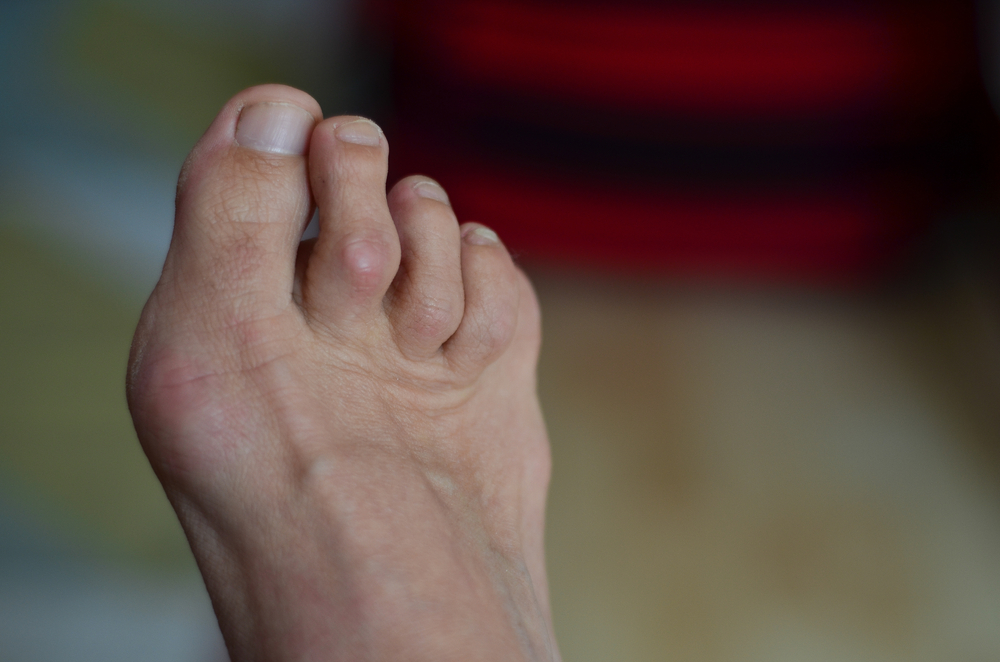The Hammer toe is a medical condition in which the small (2nd, 3rd and 4th) toes of the foot are bent at the middle joint, like a hammer.
The bent toes can be rigid or flexible depending on how severe the deformity is. It is commonly associated with trauma, abnormal muscle balance and certain types of shoes. This article will present all you need to know about hammer toes.
What causes it?
Unlike many other foot conditions, hammer toes do not have a genetic basis for their cause. Most people with the condition are aged 70 years or older, and they are predominantly women. The three most common causes of the conditions are:
- Poorly fitted shoe-wear: high-heels and shoes that are too tight in the toe box crowd out toes into a very limited space. The curled toe position may persist even when you are not wearing shoes. However, in saying that, hammer toes won’t form after one day of high-heels or misfitted shoes wearing. Only long-term toe curling predisposes to joint deformities.
- Trauma: direct injury of the joint or tendons connecting the underlying muscles to bones can result in toe-curling.
- Imbalance of toe muscles: intrinsic muscular injury or damage might result in muscular imbalances, which in the long term results in toe bending to correct the imbalance.

What are the symptoms of Hammer Toes?
At first, the affected toe is usually flexible on forced movement with minimal or no pain associated. If not treated or managed, it can progress to become rigid, and some patients report pain on forced movement. Corns and calluses are common complications from the toe rubbing against the inside of the tight shoes. At a late stage, patients usually notice swelling or redness in affected joints and have difficulty walking.
Patients are strongly advised to consult a doctor or podiatrist at the earliest possible occasion when symptoms appear. Diagnosis is usually based on clinical presentations. An X-ray image can be taken to confirm the diagnosis and guide treatment.
How to treat it?
During the early stage of its development, conservative management is much preferred over surgical interventions. Here are some simple measures you can achieve at home:
- Wearing well-fitted shoes – avoid tight shoes and high-heels
- Stretch the toes to their normal position with your hands
- Tape the toes to their normal position
- Perform certain exercises, like towel curls, to strengthen the intrinsic muscles in the foot.
If conservative management fails to alleviate the symptoms, surgical interventions can be considered:
- Tendon lengthening or transfer: available for patients whose affected joints are still flexible. The goal of the procedure is to correct the tendon which caused the joint imbalances.
- Bone shortening patients whose affected joints are no longer movable should consider a bone shortening procedure, in which part of the affected bone will be removed so that the toe can extend fully. The left-over bone will be fused by a wire or pin.
After successful treatment, hammer toes can always reoccur in other joints or even in the same joints if treated conservatively.
How to prevent Hammer Toes
Lifestyle modifications are the key:
- Wear comfortable shoes: shoes that are spacious and made up of soft materials.
- Avoid high heels: high heels are designed so that more pressure is exerted onto your toes with much less space for the toes to extend.
- Exercise: toe exercises like picking up small objects with toes can prevent intrinsic foot muscle imbalances.
Once symptoms start to develop, see a health practitioner as soon as you can. Walking and running can become very painful in late-stage hammer toes and significantly limit your ability to perform daily activities. Early surgical intervention is usually associated with a higher chance of healing as well.












